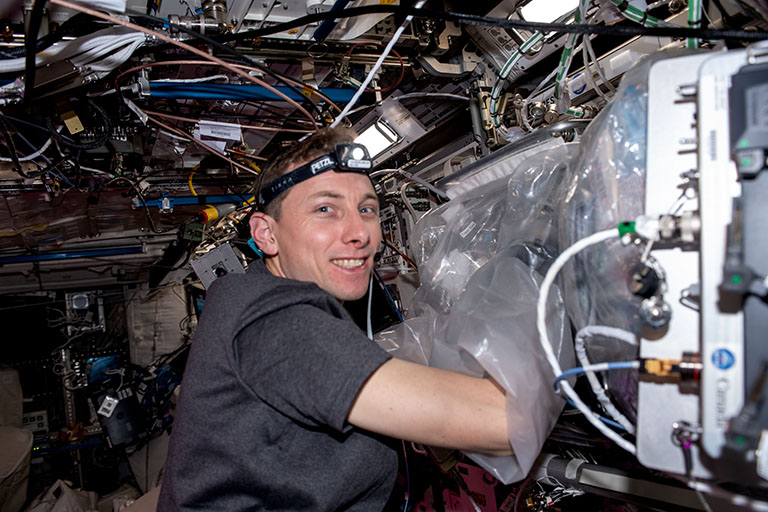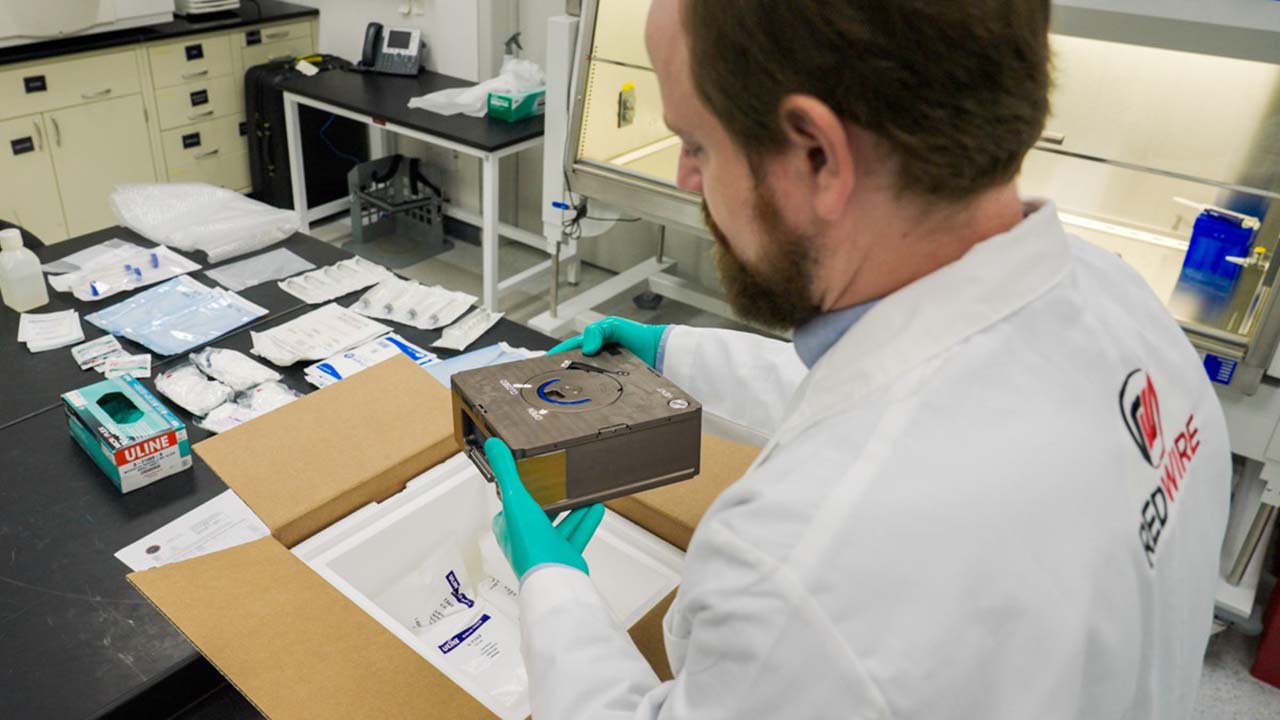Researchers recently took tissue engineering to new heights when they leveraged the International Space Station (ISS) National Laboratory to successfully 3D print a human meniscus (a piece of cartilage in the knee joint). Redwire Space succeeded in this pioneering achievement in space using their BioFabrication Facility (BFF), with the goal of one day helping people recover from meniscus injuries back on Earth.
Whether you’re a professional athlete or a service member, or even if you just like to shoot hoops in your driveway, orthopedic injuries can affect us all. As one of the largest and most complex joints in the human body, the knee is highly susceptible to injury. In fact, one of the most common orthopedic injuries is a torn meniscus—the protective piece of cartilage that helps the joint move freely. Currently, the meniscus cannot be replaced, it can only be surgically repaired or removed, leading to an increased risk of arthritis and knee replacement.
However, advances in bioprinting could one day provide a new treatment option for this common injury, and space-based research could help. On the ground, bioprinting soft tissues is difficult, and scaffolding is needed to prevent the printed tissues from collapsing under gravity. However, that’s different in space. In the absence of gravity, scaffolding is unnecessary for printed tissues to keep their shape.
Through an ISS National Lab-sponsored investigation, researchers at Redwire harnessed the microgravity conditions of the orbiting laboratory to bioprint a human meniscus. Using live human cells, the meniscus was printed with the updated BFF, which launched to the space station in late 2022. Once the tissue was printed, it was transferred to another Redwire facility—the Advanced Space Experiment Processor (ADSEP)—for culturing before being packaged up and shipped back to Earth for analysis.
Crew-6 astronauts Wood Hoburg, Steve Bowen, Sultan Alneyadi, with NASA astronaut Frank Rubio, all had a hand in the successful project. “We printed the first section of [human] meniscus ever printed in space,” said Hoburg during a Crew-6 post-landing press conference. “It took some trial and error throughout our mission, but we got it to work, and we ended up with a human meniscus.”

MEDIA CREDIT: Image courtesy of NASA
Rich Boling, a Redwire vice president, said the meniscus is a great tissue to start printing with, not only because many people have knee injuries but also because it is a good tissue to test the BFF. “The meniscus is great because it’s very avascular, meaning it lacks blood vessels, which is what tends to hold back large-scale 3D printing,” he said. “So right when you print it, you’re already closer to human tissue than you would be if you started out trying to print a heart.”
Redwire’s ultimate goal is to help with the organ shortage by printing organs in space one day. Even though that dream may be years away, this is an important first step in getting there. By starting with a thick, avascular tissue, like the meniscus, Redwire can continuously improve its printing system and scale up its printers.
For its next BFF investigation, Redwire plans to print a sample piece of cardiac tissue. According to the company, in the future, the BFF could be used to print a variety of tissues, including organoids. These small three-dimensional tissue structures that mimic human organs are made from human cells and can be used as a valuable tool for drug testing. Organoid studies also allow researchers to collect meaningful data that can aid in disease modeling, drug development, and as the advancement of tissue engineering.
“This is a groundbreaking milestone with significant implications for human health,” said John Vellinger, a Redwire executive vice president. “Demonstrating the ability to successfully print complex tissue such as this meniscus is a major leap forward toward the development of a repeatable microgravity manufacturing process for reliable bioprinting at scale.”
Subscribe to AM Chronicle Newsletter to stay connected: https://bit.ly/3fBZ1mP
Follow us on LinkedIn: https://bit.ly/3IjhrFq
Visit for more interesting content on additive manufacturing: https://amchronicle.com


